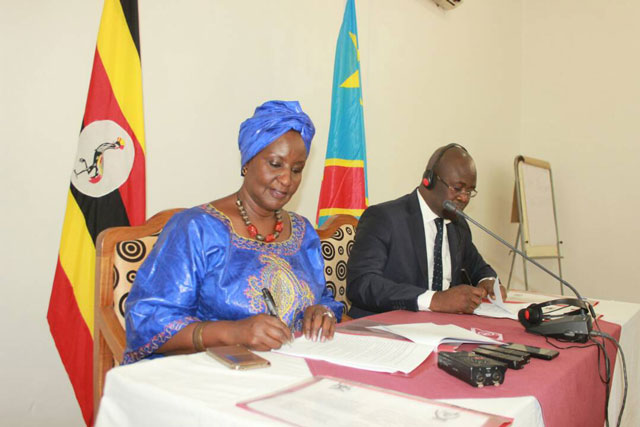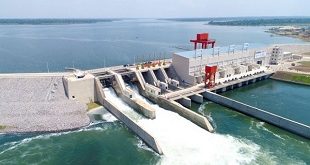
COMESA: Experts call for harmonisation of standards within the trading bloc
Kampala, Uganda | JULIUS BUSINGE | The Common Market for Eastern and Southern Africa bloc presents huge opportunities for businesses but a number of challenges remain.
Delegates from Kenya, Uganda, Rwanda, Ethiopia and Malawi said at a recent meeting in Kampala that despite the availability of the US$682billion market and a population of slightly over half a billion people, a cocktail of challenges including low awareness on sanitary and phytosanitary (SPS) obligations and responsibilities, weaknesses in the legal and policy frameworks are hindering trade within the bloc.
SPS measures are mandatory requirements instituted by governments in the COMESA bloc to protect human, animal and plant health; they take the form of legislation, inspection, testing requirements and border controls which are all linked to trade.
Other challenges discussed include; inadequate capacity to negotiate equivalence, mutual recognition agreements for market access and weak coordination amongst government institutions.
Also, agriculture trade flows – one of the largest trading sector – is characterised by high levels of informality estimated at over 70% as well as a rigid policy and centralised regulatory framework that discourages smooth flow of products.
These challenges were presented by several discussants including Martha Byanyima from the COMESA secretariat, Doris Kiconco, Paul Omanyi and Gilbert Sebutare – all from the Uganda’s Ministry of Agriculture Animal Husbandry and Fisheries.
Amelia Kyambadde, the minister of trade, who was the chief guest, said sanitary and phytosanitary standards are a crucial dimension of trade policy.
She said it is on the basis of trade policy that the government has made tremendous strides in the formulation of plans, policies, laws and regulations that provide for protection of human, animal and plant life and health – all geared towards improving the competitiveness of Uganda’s products in COMESA.
She listed them as; the National Agriculture Policy 2013, the National Trade Policy 2008, The Foods and Drugs Act, 1964, The Public Health Act 1969, The Plant Protection and Health Act, 2015, The Animal Diseases Act 2006, The National Food Safety Strategic plan 2006-2016, The Agricultural Chemical control Act, 2006, The Public Health Act 2000, and The National Drug Act, 2000.
However, Kyambadde said discussing the challenges and having the legal framework without real solutions to the problems would not help.
She suggested that there is need for member states to formulate and amend relevant policies related to post-harvest handling, production, marketing and transportation; building institutional capacity in the local governments, private sector, producer groups; investing in laboratories, sensitisation of farmers and boosting extension services for good agricultural and manufacturing practices.
Uganda’s National Development Plan (NDPII) 2015/16-2019/20 recognises agriculture and trade sectors as some of the key drivers for private sector led economic growth.
Currently, the sector employs around 70% of the population and contributes around 26% to national GDP.
Kyambadde said non-compliance with SPS measures recently cost COMESA countries tremendous export opportunities, both at the intra-regional and the international level.
“Recently fruits and vegetables worth US$60million from 53 firms holding export license were intercepted and rejected by the European Union due to lack of compliance with sanitary and phytosanitary standards,” she said.
The Assistant Secretary General in charge of Programmes at COMESA secretariat, Ambassador Kipyego Cheluget said all the 21 member states are heavily dependent on fisheries and agriculture and thus should address the constraints.
He said there is low compliance to standards by small and medium enterprises which undermines industry competitiveness, trade facilitation and market access for food and agricultural products.
According to available statistics, trade volumes in the COMESA region grew by 5% in 2016 with total exports amounting to US$471bn.
But intra COMESA trade remains low relative to other regions stagnating at around 11% of total COMESA exports (2016) and with the majority of traded products being with low value addition.
Over 90% of the member states trade with other parts of the world.
Although intra Comesa trade is low, Cheluget said, there is potential trade worth US$82bn.
“So we must work out how to realise that enormous potential,” he said.
Richard Kamajugo from Trademark East Africa said that government and development partners should take lead in ensuring quality standards of goods by implementing the policy and legal frameworks that are in place.
“We will work closely with COMESA to enhance trade,” he said, “we will get in this area with the same zeal and energy that we have invested in other areas.”
Daniel Njiwa, a consultant for COMESA said that dealing with trade barriers in the bloc would require governments to involve the people in the formulation process of the policies and laws regarding standards.
He also said government agencies need to strengthen coordination in addition to harmonising of standards for agricultural inputs as well as a supportive tax regime.
Daniel Birungi, the executive director of Uganda Manufacturers Association said that there is need for strengthening collaboration between government and the private sector, investing heavily in storage facilities in addition to quick implementation of trade related decisions made by the governments.
 The Independent Uganda: You get the Truth we Pay the Price
The Independent Uganda: You get the Truth we Pay the Price


